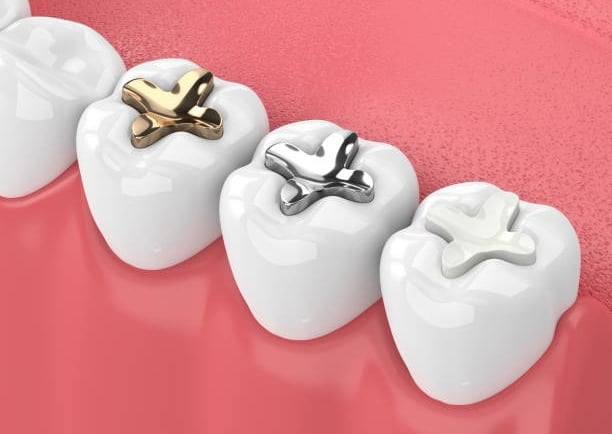DENTICA ORTHODONTIC AND MULTISPECIALITY DENTAL CLINIC
A Patient's Guide to dental procedures: Teeth filling
Part 2 Dental restorations
Dr. Shruti Chouragade
7/31/20252 min read


Teeth fillings/ restorations are common dental procedure that helps to restore the function and shape of a tooth affected by decay. Here are a few points to help you understand the procedure better -
What is a Teeth Filling?
A teeth filling is a material used to fill a cavity after the decayed part of the tooth has been cleaned. Fillings help support the structural integrity of the tooth, prevent further decay, and restore normal function of the tooth.
Why You Might Need a Filling
1. Cavities : Some of the bacteria present in the oral cavity produce acids that erode the tooth enamel, creating holes / cavities that need to be filled.
2. Tooth Damage: Fillings can also be used to repair cracked or fractured teeth due to trauma or excessive wear.
3. Sensitivity: If you experience sensitivity caused by damage in your teeth, a filling can help eliminate these symptoms.
4. Aesthetic Improvement: Fillings can improve the appearance of teeth that have been chipped or are stained, especially with tooth-colored materials.
Types of Filling Materials
1. Amalgam Fillings: Made from a blend of metals (including silver and mercury), these durable fillings are ideal for back teeth where chewing pressure is greatest. But are not in use in current practice due to a few of its disadvantages.
2. Composite Fillings: These are tooth-colored materials that can be blended to match the natural shade of your teeth, making them a popular choice for visible areas.
3. Ceramic Fillings: Made from porcelain, these fillings are very durable and can offer a natural appearance, but they may be more expensive.
4. Glass Ionomer Fillings: These fillings release fluoride, which can help protect the tooth from further decay. They are often used in areas that are less exposed to chewing pressure and in children.
The Filling Procedure
1. Consultation: Your dentist will examine the affected tooth and may take X-rays to assess the extent of decay or damage.
2. Anesthesia: If needed local anesthesia will be administered to numb the area around the tooth, ensuring you remain comfortable throughout the procedure.
3. Decay Removal: Your dentist will drill out the decayed area of the tooth, cleaning the cavity to prepare it for filling.
4. Filling Placement: The filling material will be applied in layers. For composite fillings, a special light may be used to harden each layer.
5. Shaping and Polishing: Once the filling is in place, your dentist will shape it to a normal bite and polish it for a smooth finish.
Aftercare and Recovery
- Pain Management: Over-the-counter pain relievers can be used if needed.
- Diet Considerations: Avoid chewing hard foods or using that side of your mouth for at least 24 hours, especially if you have a composite filling.
- Oral Hygiene: Continue to brush and floss regularly, paying special attention to the filled area.
When to Contact Your Dentist
If you experience excessive pain, prolonged sensitivity, or if the filling feels loose or falls out, reach out to your dentist immediately for evaluation and possible repair.
Take away message:
Understanding the process and purpose of teeth fillings can help ease any anxiety the patient may have about the procedure. Fillings are essential for maintaining oral health by preventing further decay, restoring function, and enhancing the appearance of your teeth. If you suspect you need a filling or have any questions about the process, don’t hesitate to consult your dentist for professional guidance and support.
FOLLOW US
Your smile is important to us !
contact details
CLINIC ADDRESS
dentica.nagpur@gmail.com
+91-7823846171
© 2025. All rights reserved.
+91-9766572483
301 Dream Aura, 185 Gandhi Nagar, Near LAD Metro station, Nagpur-440010.
Start Your Smile Journey Today!
